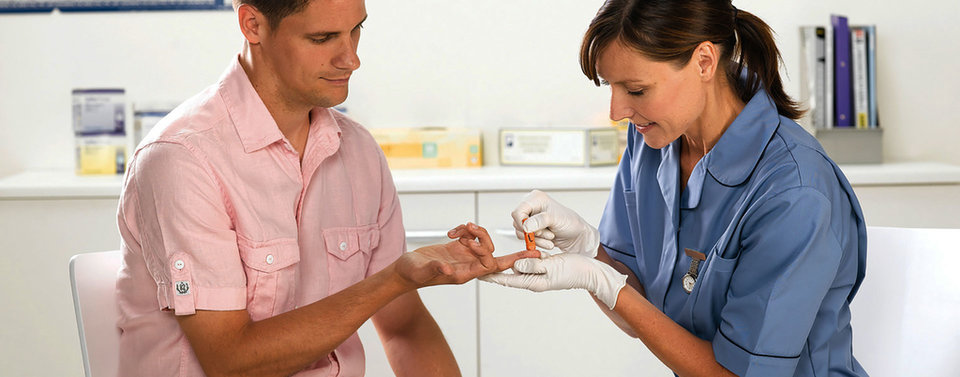COMPANY INSIGHT
Sponsored by Owen Mumford
The next steps for connected drug delivery
George I’ons, Head of Product Strategy and Insights, Owen Mumford Pharmaceutical Services

With healthcare systems further overburdened due the pandemic, it has never been so critical to improve patient adherence to drug treatments. In the US, up to 50% of patients with chronic conditions fail to take their medications as prescribed, while in the UK, it is thought that between a third and a half of all medicines prescribed for long‑term conditions are not taken as recommended, increasing the risk of avoidable hospitalisation and escalating treatment costs in the long-term. Digital tools are already playing a part in monitoring and improving adherence, especially for chronic respiratory conditions and for diabetes, but there remains wide scope for increased connectivity and remote patient monitoring.
The pandemic has accelerated progress in this field, by necessitating rapid adoption of digital tools. The need to manage ongoing pressures, as well as the benefits that such tools offer, is likely to propel this trend even when the crisis recedes. In fact, according to a recent poll, the vast majority of general practice doctors in the UK intend to keep some or all of the new technology they have introduced after the pandemic. For pharmaceutical businesses, this increased receptivity towards digitalisation presents a significant opportunity.

The growth of connected drug delivery devices
Focusing on one specific area of healthcare digitalisation, the global connected drug delivery device market (injectables and inhalation devices specifically) is projected to grow at over 25% CAGR to reach more than $700 million in 2025. With the help of embedded electronics and sensors, digitally connected drug delivery devices can generate data on the time, volume and site of a self-administered medication. Clinicians can then observe whether prescribed therapies are being administered in the correct dosage and frequency, make more informed decisions, and plan appropriate interventions.
This treatment data builds a better understanding of adoption and efficacy, which can help to identify the root causes of non-adherence. This is especially valuable for pharmaceutical and medical device companies who increasingly offer patient training, education and support programmes for their products. Additionally, with pharma companies under greater pressure from governments and health insurers to provide clear evidence of the efficacy of their drugs, as well as information on adoption and adherence, connected devices may help to build an invaluable body of concrete data around a drug and its use by the patient.
Advancing digitalisation in drug delivery
For connected drug delivery devices to be efficiently implemented and to realise their full potential, pharmaceutical companies must address several challenges. Collaborating with other healthcare stakeholders – whether patients, governments, payers or healthcare professionals – will be essential in facilitating connected device development and adoption.

Human factors
Firstly, human factors research shows us that patient priorities for injection devices are comfort and ease-of-use, so developers should take care not to introduce new complexities that may further hinder adherence when connectivity options are introduced. Testing should also take into consideration that patients, carers or clinicians may not all be accustomed to pairing, downloading and using digital applications. A further consideration is how access to treatment data may impact patients, as it may be empowering for some and overwhelming or distressing for others.
Regulatory approval
As innovation in the healthcare industry develops rapidly, regulatory bodies are developing guidelines accordingly to ensure appropriate oversight. For instance, the FDA’s recent guidance specifies that, if a software function that meets the definition of a device is deployed on a mobile platform, it may be referred to as a “mobile medical app”, and may therefore be subject to specific requirements. Electronic elements make the regulatory process more complex, while obtaining hard evidence on the utility of digitalisation in a device is difficult without first testing it on a large scale, and with a range of patients. Regulatory specialists can help to put together a robust submission, and device partners should also be able to advise on drug-device compatibility to demonstrate comprehensive assessment of the complete final product.
Data protection
Pharmaceutical companies must clarify which entities are responsible for storing data generated by medical devices in their portfolio, and which entities own this data. Failure to verify this could result in confidential patient data being left unprotected. In the US, medical device manufacturers are responsible for remaining vigilant about cybersecurity risks, while Healthcare Delivery Organisations (HDOs) must protect their hospital systems. Communication between stakeholders is therefore invaluable to optimise data protection. Manufacturers and healthcare organisations should also work together to develop interoperability across clinical systems, so that connected devices are not limited to institutions with specific IT systems in place, which would limit their chances of success.
Sustainability
Lastly, the pandemic has drawn greater attention to the environmental footprint of the medical device industry, as infection control called for large volumes of single-use personal protective equipment. Introducing electronics in disposable drug delivery devices is not sustainable from a financial or environmental viewpoint. However, innovative hybrid approaches are needed – and are already being employed by in the industry – so that the embedded electronics can sit in a reusable connected unit, and the traditional drug delivery device which fits inside the unit can be discarded and replaced after each use. In the longer term, effective use of connected devices may reduce the overall environmental impact of a therapy, since improved adherence reduces the need for healthcare visits and the subsequent use of energy and pharmaceutical products.
Ageing populations combined with an increase in chronic diseases, and now the effects of the pandemic, makes increased digitalisation indispensable to alleviating the pressure on healthcare services. Though there are complex issues associated with introducing digitalisation in drug delivery devices, the advantages of increased adherence and drug efficacy are numerous and wide-reaching. Businesses making strides in this field now have the opportunity to gain competitive advantage and set industry benchmarks in innovation and digital best practice.
1 Medical Economics, Improve medication adherence with technology, 6 August 2020 https://www.medicaleconomics.com/view/improve-medication-adherence-with-technology
2 National Institute for Health and Care Excellence (NICE), Medicines adherence: involving patients in decisions about prescribed medicines and supporting adherence, 28 January 2009 https://www.nice.org.uk/guidance/cg76/chapter/Introduction
3 GP Online, Should remote consultations be the default after COVID-19?, 03 August 2020 https://www.gponline.com/remote-consultations-default-covid-19/article/1690834
4 Owen Mumford Pharmaceutical Services, Well Connected: An update on the connected drug delivery device market, May 2020
5 Owen Mumford Human Factors qualitative research conducted among a 120+ strong focus group.
6 US Food & Drug Administration, GUIDANCE DOCUMENT: Policy for Device Software Functions and Mobile Medical Applications, Guidance for Industry and Food and Drug Administration Staff, September 2019 https://www.fda.gov/regulatory-information/search-fda-guidance-documents/policy-device-software-functions-and-mobile-medical-applications
7 US Food & Drug Administration, Cybersecurity
Contact information
Owen Mumford Ltd
Brook Hill, Woodstock, Oxfordshire,
OX20 1TU, United Kingdom.
Tel: +44(0)1993812021
Email: pharmaservices@owenmumford.com
Website: www.ompharmaservices.com